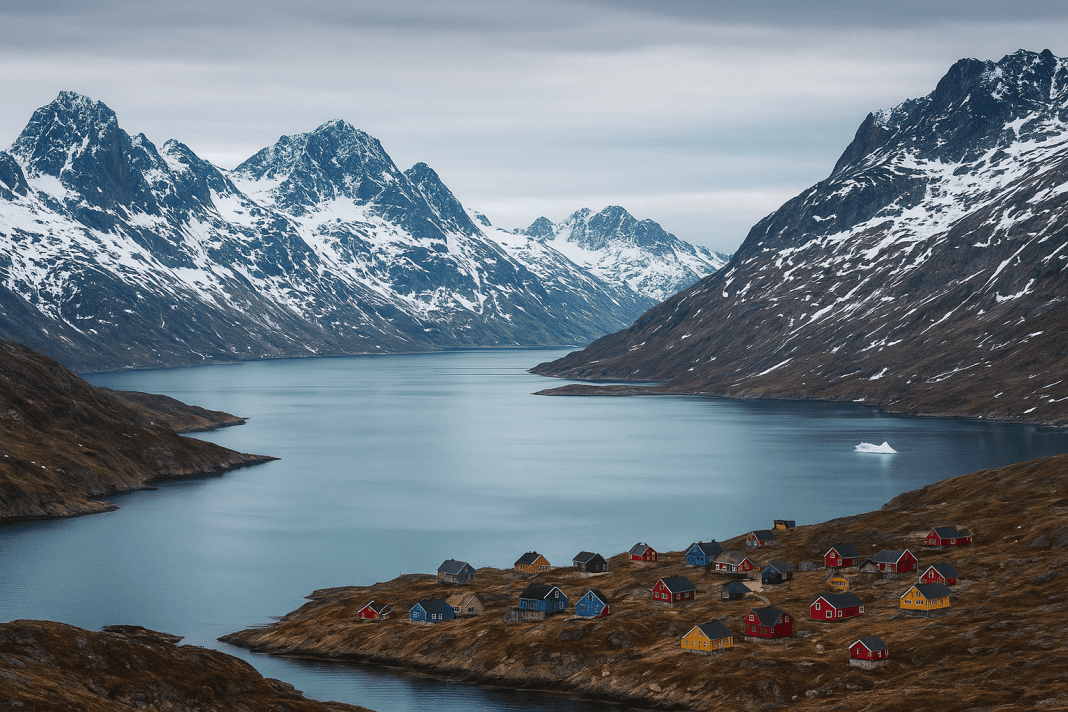Greenland, the world’s largest island, may have a small population of only about 56,000 people, but it has become the focus of big international attention. The island’s immense size and icy terrain make it both valuable and vulnerable. With much of the landmass covered by thick ice sheets and fjords, protecting and monitoring such a vast area is a serious challenge.
Greenland Strengthens Security Amid Rising Interest
To respond to these realities, Denmark and Greenland have launched the Arctic Basic Training program. The initiative is designed to prepare young Greenlanders for difficult tasks such as emergency response, survival in harsh Arctic conditions, and search-and-rescue operations. Training includes long days at sea, sailing through Nuuk Fjord, sleeping very little, and learning to stay alert in unpredictable environments. Recruits also work with fire and police services to build skills for crisis management.
This training program is part of a broader effort by Denmark and Greenland to strengthen the island’s security. A permanent U.S. military base already operates in Greenland, but interest in the region is growing beyond that. Its location in the North Atlantic makes Greenland strategically important for shipping and defense, while its underground wealth of minerals adds to its appeal.
Denmark steps in with billion-crown lifeline to ease Greenland’s economic and healthcare crisis
The melting of Arctic sea ice due to climate change has only intensified this interest. As new shipping routes open in northern waters, more countries, including Russia and China, are paying attention to Greenland’s position on the map. The Danish forces’ Joint Arctic Command monitors these developments closely. Officials highlight that Greenland’s terrain makes it hard to access and protect, yet its importance is undeniable.
For these reasons, cooperation with neighboring countries is seen as critical. Strengthening ties with Canada, Greenland’s closest Arctic neighbor, is emerging as a practical solution for sharing responsibilities and addressing security challenges together.
Geopolitical Tensions Rising Around Greenland
Greenland has been thrust into the global spotlight after repeated statements from U.S. leaders about acquiring the island. The idea of purchasing Greenland has been raised several times, sparking alarm both in Denmark and among Greenlanders. For many residents, these discussions feel like threats to sovereignty.
Denmark has responded strongly, summoning senior U.S. representatives to underline that Greenland’s future is not a matter for negotiation or sale. Greenland’s own government has echoed this position, making it clear that the territory is not for sale under any circumstances.
Local communities in Greenland are also vocal about independence. Public campaigns and even symbolic items, such as T-shirts declaring that Greenland is “not for sale,” show how strongly people feel about protecting their land and resources. The message is simple: Greenlanders want to decide how their natural wealth and military presence are managed.
Canada and Mexico strengthen trade and security cooperation amid US tariffs
Beyond politics, there are also pressing security challenges tied to the environment. Greenland’s territory stretches over 2,700 kilometers, with around 80 to 90 percent of it covered in ice. This landscape makes defending the island difficult, yet also restricts access for outside forces. The melting ice adds new complexities, as increased shipping and potential resource exploitation require constant monitoring.
All of this has reinforced Greenland’s strategic significance on the global stage. Major powers continue to express interest, but for Greenland, the priority remains maintaining control and ensuring that decisions are made locally.
Shared Interests and Cultural Connections with Canada
Amid these challenges, Canada is emerging as Greenland’s closest partner. The two regions share strong cultural, historical, and geographical connections. Both are home to Inuit populations whose ancestors, the Thule people, lived across Greenland, northern Canada, and Alaska. These ties mean that families, traditions, and heritage stretch naturally across borders.
For Greenland, this connection is more than symbolic. Canada’s size, resources, and Arctic experience make it an important ally. Plans are underway for Canada to open a consulate in Nuuk, Greenland’s capital. This step would create a permanent diplomatic presence, making cooperation easier and more visible. Greenland has also expressed interest in establishing its own representation in Canada, showing a mutual desire to build stronger links.
Greenland secession claims add strain to Denmark US relations amid intelligence warnings
Both sides stress that this relationship is about respect and sovereignty. Canada recognizes Greenland as a self-governing territory and supports its right to control decisions about security, military bases, and critical minerals. This support is significant at a time when Greenland faces pressure from larger powers.
Public sentiment also reflects this closeness. On social media and in daily conversations, people in Greenland and Canada often express solidarity with each other. Both communities recognize their shared Arctic identity and see value in supporting one another.
These connections highlight a relationship built not just on politics but also on cultural bonds and mutual respect. Canada and Greenland may be separated by icy waters, but their people see themselves as part of the same northern family.

